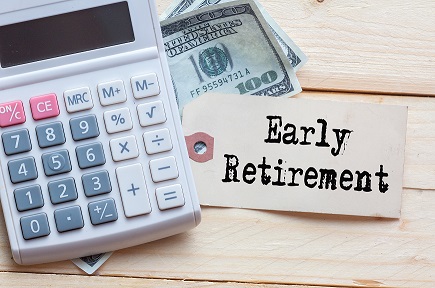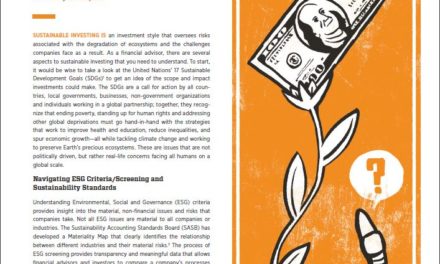
Safe Withdrawal Rate for Early Retirees
In a recent paper, “Safe Withdrawal Rates: A Guide for Early Retirees,” its author confirmed the conclusion that a 4 percent withdrawal rate from a 50/50 portfolio had a success probability of 95 percent after 30 years. Want to know more? Read this post!
To view the full article please register below:
Safe Withdrawal Rate for Early Retirees
A Safe Withdrawal Rates for Early Retirees
Conventional wisdom holds that a 4-4.5 percent annual drawdown on retirement assets represents safe withdrawal rates for early retirees, assuming a portfolio with 50 percent or more in stocks. While recent research has begun questioning this guideline, it has always been less relevant to Americans who retire early.
According to a recent survey, 60 percent of respondents said that the timing of their retirement was either “somewhat unexpected” or “very unexpected” due to involuntary loss of employment, health reasons or other events.1
For some, early retirement is a choice. Whatever the case, the analysis that led to the “4 percent rule” is based on a 30-year retirement period; this is far short of the 40-50 years that a client who retires at age 50 may spend in retirement.
Success Can’t be Extrapolated
In the research that found high success probabilities for sustaining a 4-4.5 percent withdrawal rate over 30 years, it’s critical to recall that success was defined as a terminal wealth of greater than $0.
However, many of the scenarios over the 30-year period had terminal wealth outcomes that could not possibly support another 15, 10 or even five years in retirement. Thus, for the early retiree, this convenient rule of thumb is not only inapplicable, but financially dangerous.
What may be effective for the 65-year-old retiree may not work for the 50-year-old retiree. For instance, the year 2000 was a most inopportune time to retire in light of the dotcom bust and the 2008 credit crisis. The combination of market declines and portfolio withdrawals over the ensuing years resulted in a 40 percent decline in retirement assets. For the 65-year-old retiring then (now 82), the 4 percent rule seems to be working since his portfolio is likely to last until 2030, well in line with his life expectancy. However, for the 50-year-old who retired at the same time (now age 67) the probability of this lower level of retirement savings lasting for another 20 or more years is significantly diminished.2
In a recent paper, “Safe Withdrawal Rates: A Guide for Early Retirees,” its author confirmed the conclusion that a 4 percent withdrawal rate from a 50/50 portfolio had a success probability of 95 percent after 30 years. The failure rate, though, nearly tripled from 5 to 14 percent when retirement is extended to 40 years; furthermore, at a 4.25 percent withdrawal rate, the failure rate soars from 9 to 24 percent!3
There were a number of other important findings relevant to early retirees, or for individuals who wish to plan for a longer retirement period, including:
- Equity plays a much more prominent role in portfolios that need to last 40 years or more.
- A safe withdrawal rates for early retirees will vary depending upon the capital preservation objectives of the retiree, though that range of rates is narrow.
- Success probabilities drop significantly after 70 percent equities, confirming that bonds are much less helpful over longer term horizons.
To learn more about determining a safe withdrawal rate for your clients who retire early, we invite you to read the original research.
Sources:
- https://www.usatoday.com/story/money/2015/06/02/majority-of-americans-have-to-retire-sooner-than-theyd-planned/28371099/
- https://poseidon01.ssrn.com/delivery.php?ID=054105104066068022099072088093113099056021035048087017065115115113127020090112088103124041097041114016032007104123024027064015118018046086035019108119065008127091073036050073100117011125121090079114075122102001071120121092029102125001070011120104122085&EXT=pdf
- https://poseidon01.ssrn.com/delivery.php?ID=054105104066068022099072088093113099056021035048087017065115115113127020090112088103124041097041114016032007104123024027064015118018046086035019108119065008127091073036050073100117011125121090079114075122102001071120121092029102125001070011120104122085&EXT=pdf
See referenced disclosure (3) at https://blog-dev.americanportfolios.com/disclosures/












